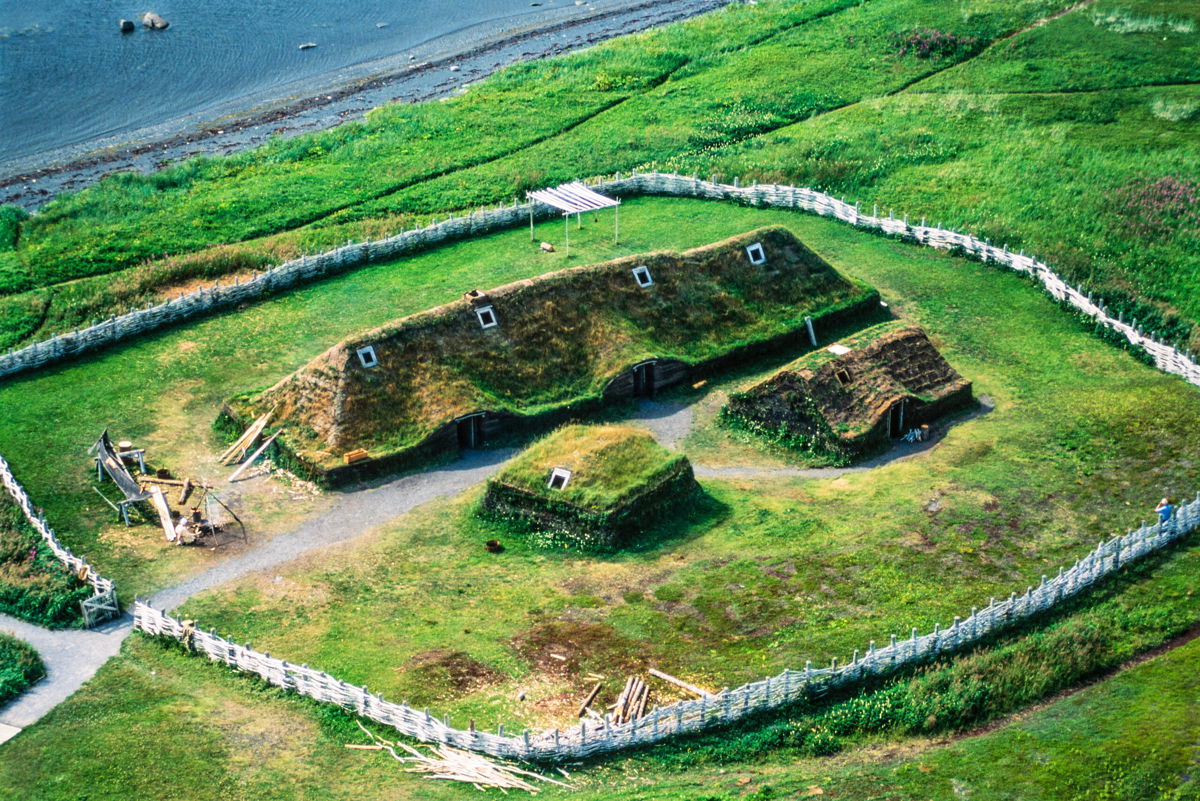Vikings explored the Americas long before Christopher Columbus

This is a reconstructed Viking Age building adjacent to the site of L'Anse aux Meadows site in Newfoundland
By Ashley Strickland, CNN
Life is a series of mysteries.
We are fascinated by true crime stories, and take comfort in watching a good ol’ mystery show. This may seem odd, but it’s ultimately about the search for truth. As humans, we crave answers and resolution.
The same could be said for the way we investigate our past and try to forecast the future.
The evidence regularly comes to light, like a scuba diver finding a Crusader sword. Discoveries like this help us create a time line and establish who, or what, was present across eras, as well as intriguing hints about what they were doing.
We never run out of characters or chapters in the unfurling narrative of our world. Together, these findings represent the never-ending story of where we came from — and help us spy pieces of the plot yet to unfold.
We are family
The Vikings were the first Europeans in the Americas, well before Christopher Columbus, according to new evidence that places the seafaring warriors at a site in Newfoundland in 1021.
Using longships, the Vikings were the first to cross the Atlantic Ocean to settle in Canada before exploring more of the Americas. This aligns with the oral histories later recorded as the Icelandic Sagas, revealing how Vikings interacted with Indigenous populations — and just who in Europe knew about Viking exploration of the new world.
Researchers landed on a definitive date thanks to two unlikely sources: chopped wood and a solar storm that occurred more than 1,000 years ago.
Across the universe
Timing really is everything. Astronomers witnessed the explosive death of a star in unprecedented detail because ground and space-based telescopes were looking in the right place at the right time.
The scientists’ observations showed what happened to the star, located 60 million light-years away in the interacting Butterfly Galaxies, shortly before, during and after the supernova.
The insights shed light on what happens before a star dies, but could also help astronomers develop an early warning system for stars that are about to meet their end.
Star birth and star death is something that NASA’s latest telescope will search for across our galaxy.
Fantastic creatures
For years, scientists have struggled to determine how horses were domesticated. Now, researchers think they know exactly when and where it happened.
An international team analyzed DNA from ancient horses and compared them with their modern relatives.
The domestic horses we know today likely originated more than 4,200 years ago in the steppes of the Black Sea region, located in modern-day Russia. They spread across Eurasia as a result of advances like horseback riding and another famous invention.
Mission critical
In the middle of the windswept valleys surrounding the Hengill volcano and its natural hot springs, in southwestern Iceland, sits a futuristic-looking metal structure full of giant fans.
Humans have emitted so much carbon dioxide into the atmosphere that machines like this are being used to literally suck the gas back out, like giant vacuum cleaners, in an attempt to slow the climate crisis and prevent some of its most devastating consequences.
Every day, the Orca plant removes the amount of carbon emitted by 800 cars a day in the United States. This technology could help remove as much greenhouse gas from the atmosphere as we emit.
Orca is emblematic of just how bad things have become, but it could also be part of what helps us emerge from this crisis.
Turn, turn, turn
Winter is coming, but it will be warmer than usual in the US, according to the National Oceanic and Atmospheric Administration outlook released this week.
The South will be drier than normal, while the Pacific Northwest will experience a wetter winter. Unfortunately, the drought-stricken Southwest won’t see much relief this winter.
If parts of the country are indeed warmer than average, that could mean a huge savings for families on their gas bill as energy prices surge.
CNN’s meteorologists noted that this is a seasonal outlook, so expect extreme variability from day to day — and remember, a similar forecast for last winter didn’t turn out as expected.
Discoveries
Here are some finds from this week that are too interesting to miss:
— Some elephants are evolving to lose one of their most defining features to survive their greatest enemy.
— The oldest aquatic animal has been found preserved in amber — and it’s been trapped in there for 100 million years.
— Researchers thought these fossilized footprints belonged to a huge meat-eating predator, but they were made by something else entirely.
Like what you’ve read? Oh, but there’s more. Sign up here to receive in your inbox the next edition of Wonder Theory, brought to you by CNN Space and Science writer Ashley Strickland, who finds wonder in planets beyond our solar system and discoveries from the ancient world.
The-CNN-Wire
™ & © 2021 Cable News Network, Inc., a WarnerMedia Company. All rights reserved.